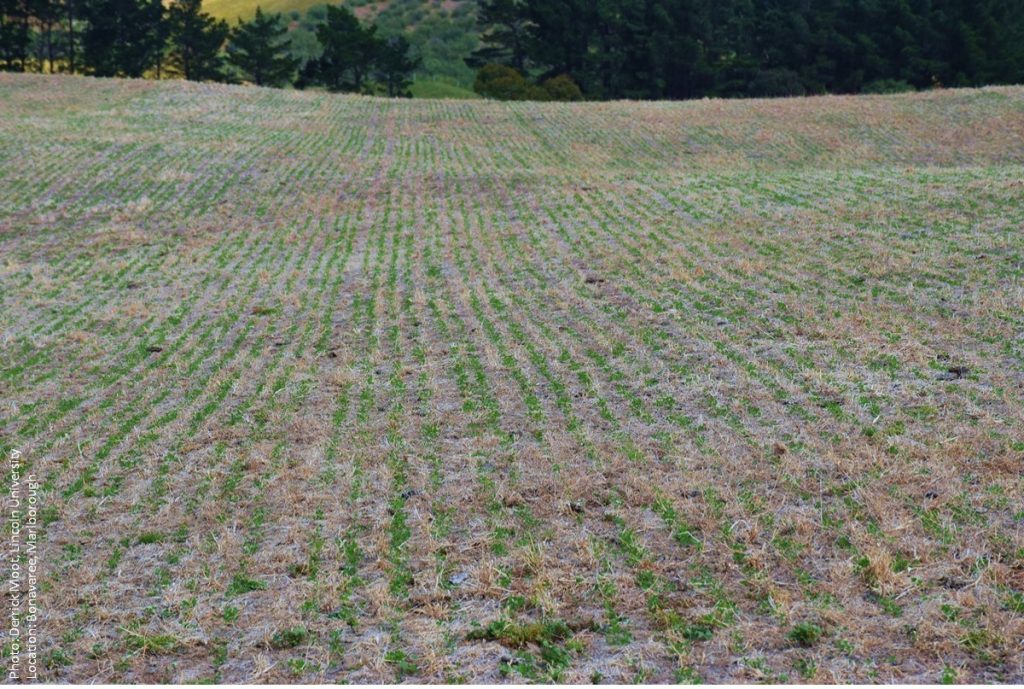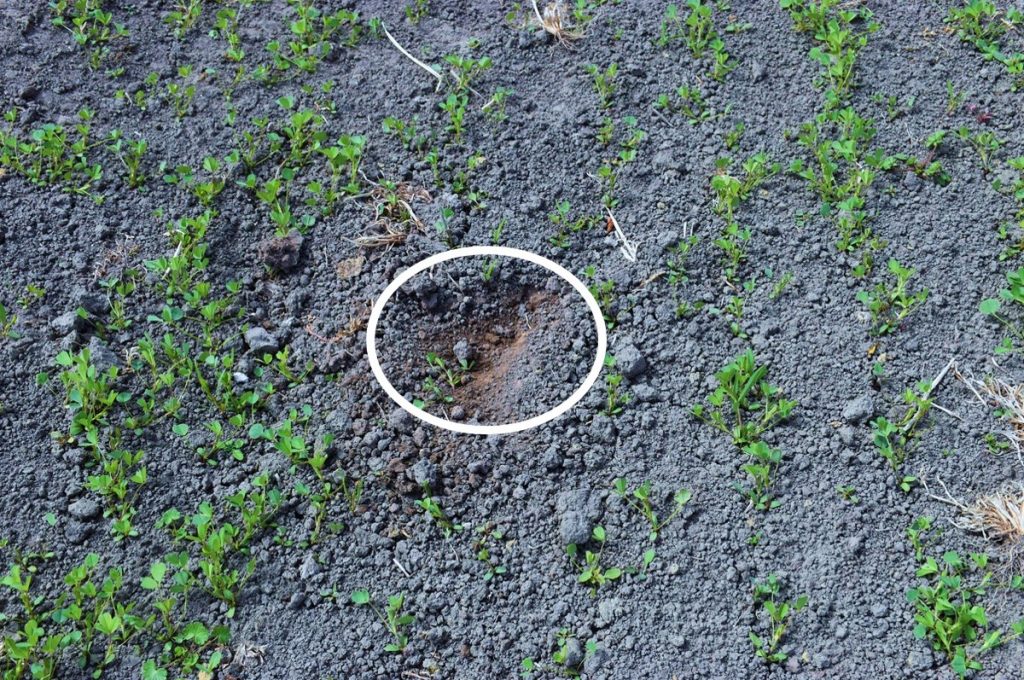Prof Moot visited Marlborough again last week to catch-up with Fraser Avery. They checked out the new lucerne which will be a key part of summer management for Bonavaree when things turn dry. Fraser has some new lucerne each year to provide mid-summer feed when the pastures and older lucerne have used up their water.
The new lucerne was sown on 15th October 2023 after two years of barley crops. The direct drilling retains soil moisture and has ensured the plants are now well established. No inoculant was used because these are older paddocks, so the rhizobia are already present in the soil. Fraser regularly checks for springtails and other insects that can decimate the new stand and sprays when needed.


The current lucerne is at the 2-3 trifoliate leaf stage and drill rows are obvious. At this time, the lucerne is growing its roots about 15 mm per day but because the ground is mostly still bare (with only dead litter cover) the moisture is being retained between the rows as a fallow. This is the moisture that these plants will use later in the summer that will ensure Fraser has lucerne to feed stock in the middle of a dry period – particularly if El Niño does its normal thing of giving us a dry summer-autumn. Fraser also commented that having some new lucerne every year meets summer demand, without needing to sow brassicas, and ensure not all of his lucerne stands come to the end of their life at the same time.
